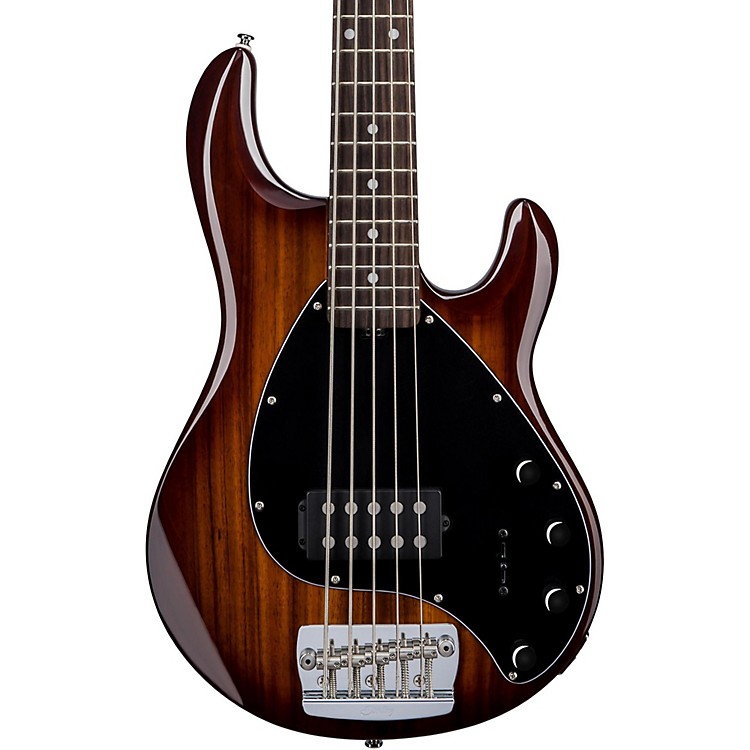

Mandola: C 3 G 3 D 4 A 4 (same as standard viola tuning).Banjo (Five-stringed): G 4 D 3 G 3 B 3 D 4 for bluegrass old time and folk banjoists use this and a wide variety of other tunings.Other plucked string instruments and their respective standard tunings include: 12-string guitar E 3 E 2 A 3 A 2 D 4 D 3 G 4 G 3 B 3 B 3 E 4 E 4 in six two-string courses.Baritone guitar (contemporary versions) – B 1 E 2 A 2 D 3 F♯ 3 B 3 a fourth below standard tuning, although A 1 to A 3 a fifth lower is also used.Baritone (older use) / 6 string bass (older use) such as the Fender Bass VI – E 1 A 1 D 2 G 2 B 2 E 3 (Similar to a standard guitar but an octave lower, and often played like a standard guitar rather than a bass guitar.).six-string bass – B 0 E 1 A 1 D 2 G 2 C 3 (identical to 5-stringed bass with the addition of a high C string a perfect fourth above the G).five-string bass – B 0 E 1 A 1 D 2 G 2 (identical to 4-stringed bass with the addition of a low B string a perfect fourth below the E).four-string bass guitar (most popular) – E 1 A 1 D 2 G 2 (its standard tuning coincides with that of a 4-stringed double bass).seven-string guitar – B 1 E 2 A 2 D 3 G 3 B 3 E 4 (identical, except for the low B, which is a perfect fourth below the low E on a 6-stringed guitar).Renaissance lute – E 2 A 2 D 3 F♯ 3 B 3 E 4 (used by classical guitarists for certain pieces identical to standard guitar tuning, except for the F♯, lowered one semitone from the standard G string, making a perfect fourth between 2nd and 3rd rather than 3rd and 4th strings).Low E falls a major third above the C on a standard-tuned cello. six-string guitar (the most common configuration) – E 2 A 2 D 3 G 3 B 3 E 4 (ascending perfect fourths, with an exception between G and B, which is a major third).Guitars and bass guitars have more standard tunings, depending on the number of strings an instrument has. 7-stringed bass viol – A 1 D 2 G 2 C 3 E 3 A 3 D 4 (an extra low A is added)Ī more recent family is the violin octet, which also features a standardized tuning system ( see page).Bass viol – D 2 G 2 C 3 E 3 A 3 D 4 (an octave lower than the treble viol).Tenor viol – G 2 C 3 F 3 A 3 D 4 G 4 (a perfect fifth below the treble viol).Treble viol – D 3 G 3 C 4 E 4 A 4 D 5 (ascending perfect fourths with the exception of a major third between strings 3 and 4).Its smaller members are tuned in ascending fourths, with a major third in the middle, as follows: The double bass is properly the contrabass member of the viol family. 5-stringed double bass – B 0 E 1 A 1 D 2 G 2 (a low B is added, so the tuning remains in perfect fourths).Double bass with a low C extension – C 1 E 1 A 1 D 2 G 2 (the same, except for low C, which is a major third below the low E on a standard 4-string double bass).Double bass – E 1 A 1 D 2 G 2 (ascending perfect fourths, where the highest sounding open string coincides with the G on a cello).Cello – C 2 G 2 D 3 A 3 (an octave lower than the viola).Viola – C 3 G 3 D 4 A 4 (a perfect fifth below a violin's standard tuning).

Violin – G 3 D 4 A 4 E 5 (ascending perfect fifths, starting from G below middle C).The most popular bowed strings used nowadays belong to the violin family together with their respective standard tunings, they are:


 0 kommentar(er)
0 kommentar(er)
